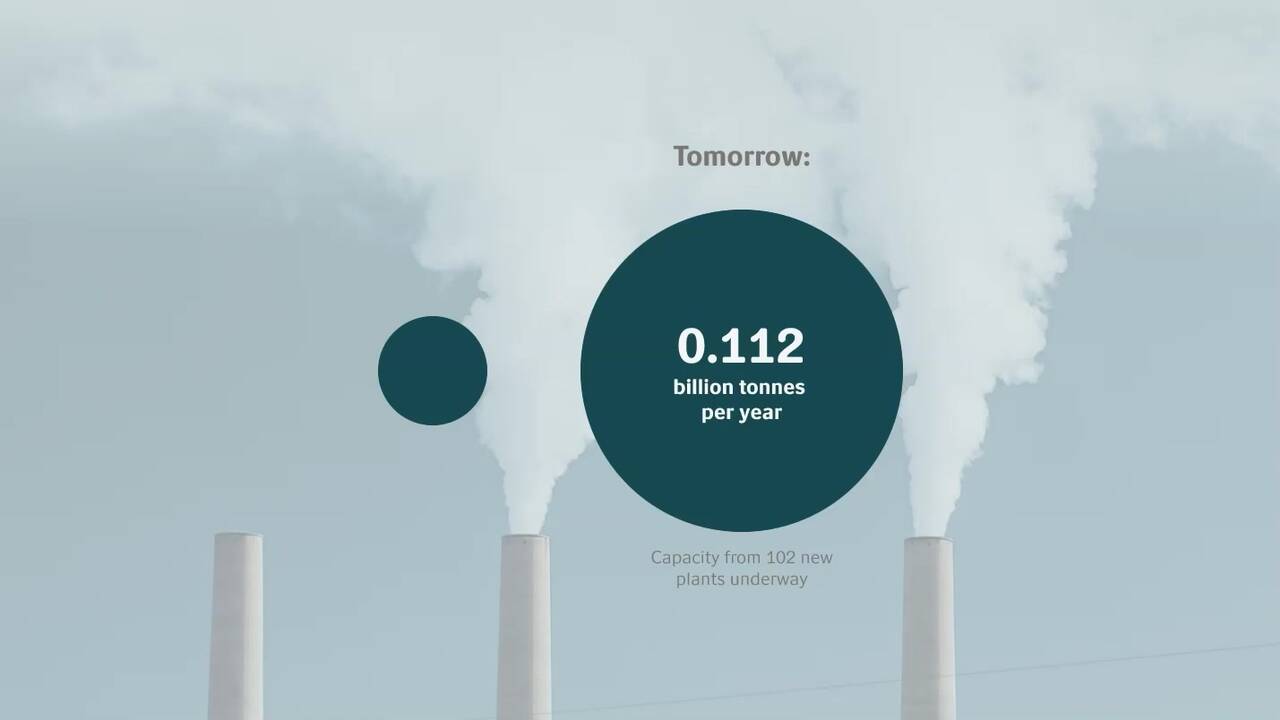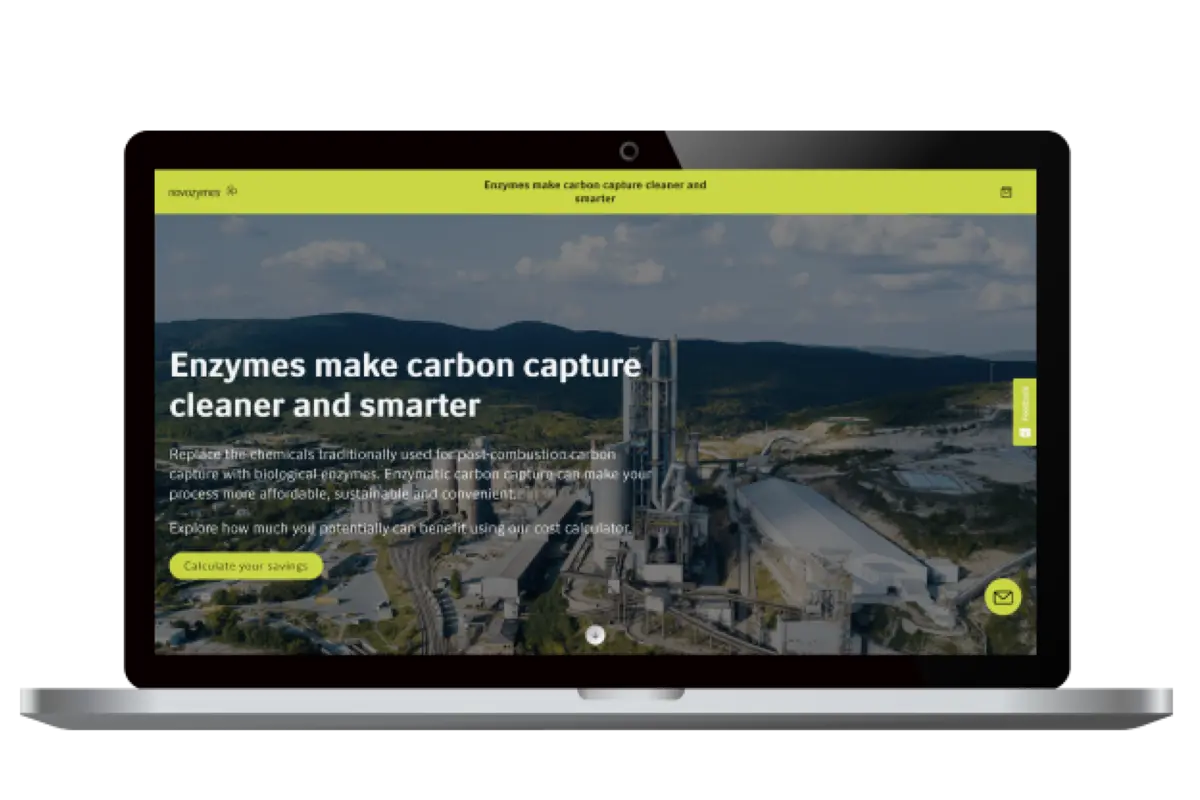Capturing emissions from industry with biosolutions
Let’s accelerate and Rethink Tomorrow
Did you know that carbon capture is the game changer we need?
We’ve all seen them – huge industrial smokestacks belching smoke into the sky. Smoke that pollutes the quality of our air and emits huge amounts of greenhouse gases (GHGs). What if we could not alone reduce these emissions, but also capture and safely store them? With carbon capture technology we can.
In fact, according to the International Energy Agency, carbon capture can deliver an estimated 20% of the total GHG emissions reductions needed by 2050 to meet our 1.5°C target. And expert organizations including the Center for Climate and Energy Solutions agree that carbon capture, utilization and storage (CCUS) is the only practical way to decarbonize the industrial sector.

This all adds up to
55 Billion Tonnes
That was the amount of CO2 emitted into our atmosphere in 2021. And the number has not started declining yet. So every tonne we can keep out of our atmosphere through carbon capture counts.
The capacity gap is massive
Unfortunately, there’s a huge gap between the need for carbon capture capacity and the solutions in place today. According to the Global Carbon Capture and Storage Institute, to even limit global warming to 2°C, we need a significant increase. We’ll need to move from current levels to more than 5.6 billion tonnes per year by 2050. As of 2021, carbon capture plants in operation or planned for construction can only meet about 3% of this amount.

But what will the impact be
"I simply can’t imagine working on anything more exciting than this. Although there are many important initiatives underway to reduce emissions, the clock is ticking. Every scientific scenario to reduce emissions in time includes carbon capture and storage. This technology is a must to safeguard our future from the worst impacts of climate change, and I’m proud to be part of making it more sustainable and affordable."
Klaus Skaalum Lassen,
PhD, Head of Novozymes Carbon
Capture and Storage activities

Enzymatic carbon capture replaces chemicals with biodegradable enzymes.
This makes the process less energy intensive, more cost effective and with fewer chemicals.

What is enzymatic carbon capture?
Carbonic anhydrase replaces chemicals in CCUS, capturing millions of carbon dioxide molecules every second and turning them into carbonate. Like conventional CCUS, the enzymatic process can capture more than 90% of CO2 emissions from flue gas. But enzymatic CCUS is more affordable, sustainable and convenient for many factories.
Supplying enzymatic carbon capture solutions worldwide
In a carbon capture collaboration agreement with Saipem, we provide enzymatic carbon capture solutions to industrial facilities and power plants around the world. Saipem supplies the carbon capture process and equipment, while we supply the enzymes that optimize the process.
Find out how much enzymatic carbon capture could save you
Our cost calculator can help you estimate how much enzymatic carbon capture could save your business.
Want to learn more about enzymatic carbon capture?
